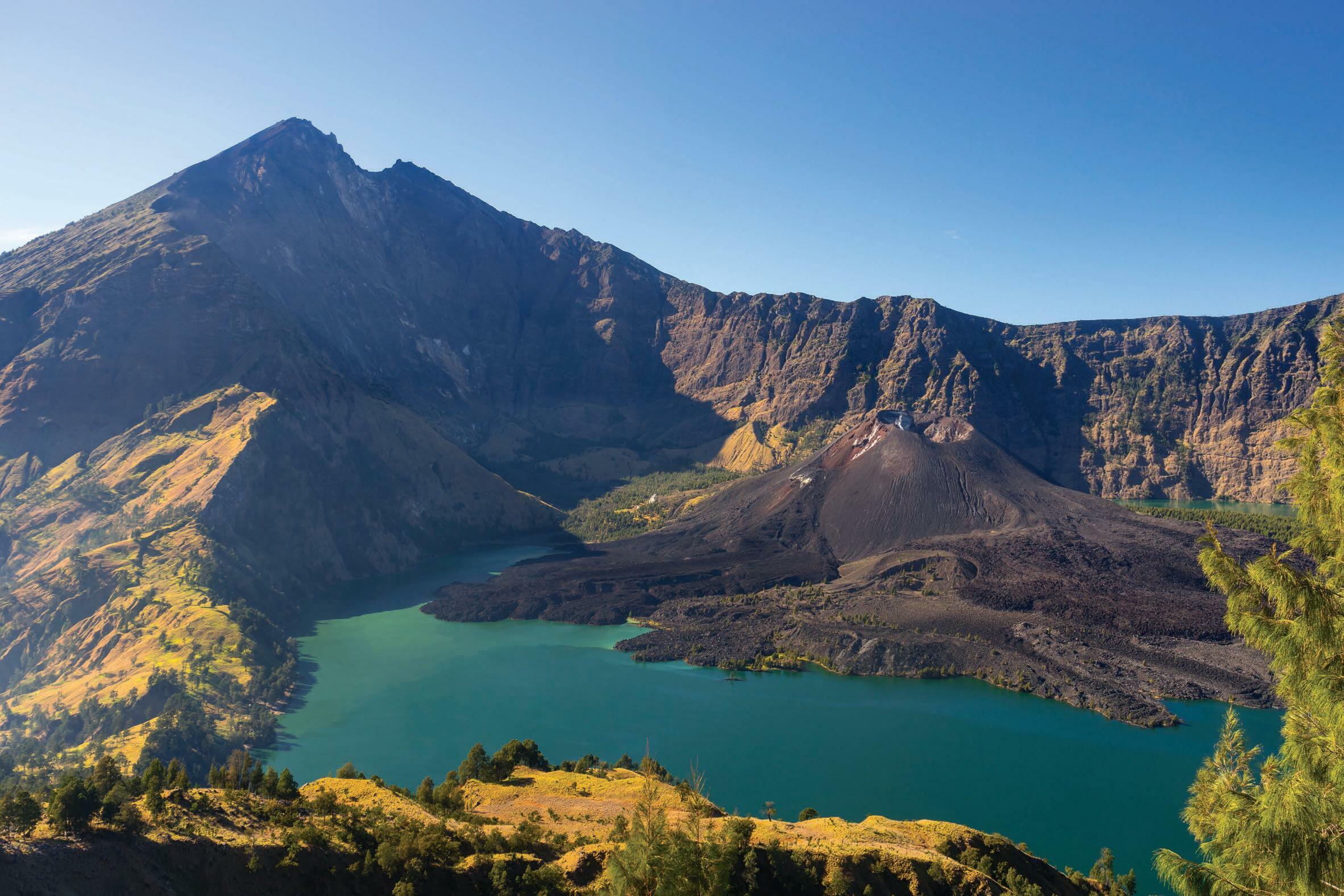
Fiery volcanoes and the frigid polar regions seem poles apart. But concealed in the Arctic and Antarctic ice sheets are mementos-ash and sulfate particles-from past super-powerful volcanic eruptions. During such eruptions, volcanoes spew material dozens of miles into the sky. The swirling of winds disperses these chemicals and ash over continents, all the way to the poles. When snow falls there, the material is also deposited. In ice cores-cylinders of ice drilled from ice sheets-sulfate from past volcanic plumes shows up as spikes. Measuring how intense each spike is helps scientists figure out how strong each eruption was.
In the 1970s, polar scientists stumbled upon a sulfate spike that occurred in roughly 1259. Unlike others, though, this one was ginormous. It dwarfed the spike from the ear-splitting 1883 eruption of Mount Krakatoa in Indonesia. "The eruption was one of the largest of the last millennium," says Céline Vidal. She's a volcanologist-a scientist who studies volcanoes. She also lectures about geography at the University of Cambridge in England. "The amount of material erupted would have buried New York City under about eight feet (2.5 m) of rocks and ash."
Medieval European accounts also provided indirect evidence for an enormous eruption at around the same time. Severe hailstorms and floods plagued eastern England and parts of Europe in the winter of 1260 to 1261. From Iceland to Italy, ice layers crusted over seas and rivers.
There was just one problem: Nobody seemed to have reported seeing a volcano erupting. So, where was the missing volcano?
HOT INSIDE, COLD OUTSIDE
Volcanic ash in the upper layers of the atmosphere can block sunlight and heat. This makes summers colder than usual. Trees show stunted growth. Harvests of crops may also be poorer.
Diese Geschichte stammt aus der October 2023-Ausgabe von Muse Science Magazine for Kids.
Starten Sie Ihre 7-tägige kostenlose Testversion von Magzter GOLD, um auf Tausende kuratierte Premium-Storys sowie über 8.000 Zeitschriften und Zeitungen zuzugreifen.
Bereits Abonnent ? Anmelden
Diese Geschichte stammt aus der October 2023-Ausgabe von Muse Science Magazine for Kids.
Starten Sie Ihre 7-tägige kostenlose Testversion von Magzter GOLD, um auf Tausende kuratierte Premium-Storys sowie über 8.000 Zeitschriften und Zeitungen zuzugreifen.
Bereits Abonnent? Anmelden

A 12-Year-Old Girl's Election Sticker Is a Winner
VOTING IS A FUNDAMENTAL FREEDOM FOR AMERICANS, A MEANS OF DOING ONE'S CIVIC DUTY AND A WAY AN INDIVIDUAL CAN EXPRESS THEIR VOICE. In 1971, the United States lowered its voting age to 18. But that doesn't mean kids and teens under 18 can't participate in elections in various ways.

If everything the human brain does is basically sets of electrical impulses, how exactly does that translate into a state of mind?
You're not the only one asking this question. Every neuroscientist in the world is wondering the exact same thing, says Zach Mainen

EARTH'S TINIEST BUILDERS
THE HIDDEN WORLD OF MICROBES IN THE EARTH'S CRUST

MUMMIES SPEAK
ABOUT MICROBES, MIGRATION, AND MORE

GOING WITH YOUR GUT
HOW DO MICROBES AFFECT OUR HEALTH? LET'S COUNT THE WAYS...

BUG Detective
A burglar sneaks into a house on a quiet street in New York City. He walks through the house, touching countertops and door handles. Finally, he steals a single card from a full deck. Then he leaves.

Little Creatures Among Us THE MANY MICROBES IN OUR DAILY LIVES
When you think you're alone, you're actually not. In the ground, the air, your room, and even your body are Strillions and trillions of creatures so tiny you can't see them.

A Mars Rock Found With Leopard Spots Could Be a Sign of Ancient Life
IN JULY, NASA'S PERSEVERANCE ROVER CAME ACROSS A SPOTTED ROCK IN WHAT WAS ONCE A RIVERBED IN THE JEZERO CRATER ON MARS.

Para Athlete Uses Exoskeleton Suit to Carry the Olympic Torch
In July, a 36-year-old French tennis para athlete, Kevin Piette, got a chance to participate in this summer’s Olympic torch relay without using a wheelchair.

Ancient Egyptians May Have Used a Water System to Lift Stones to Build Pyramid
HOW ANCIENT EGYPTIANS BUILT THE MASSIVE PYRAMIDS IN EGYPT MORE THAN 4,000 YEARS AGO HAS LONG BEEN A TOPIC OF WONDER AND DEBATE.